Episodes
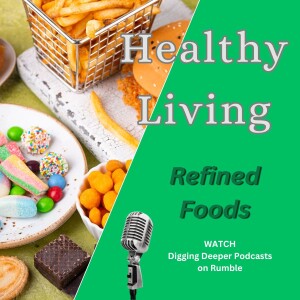
Saturday Mar 23, 2024
Refined Foods are Killing Us
Saturday Mar 23, 2024
Saturday Mar 23, 2024
Healthy Living Saturday Nights 7-7:30 pm cst
https://www.diggingdeepertv.com
View anytime on Rumble https://rumble.com/c/diggingdeepertv
Listen anytime on our podcast channel https://healthylivingpodcast.podbean.com
Week 164 - REFINED FOODS
The secret is out. It is now in the ‘mainstream media’. NPR has published an article highlighting the fact that the food we eat is slowly killing us.
Evidence against ultra-processed food piles up
A study published in the British Medical Journal finds people who consume high amounts of processed foods have an increased risk of anxiety, depression, obesity, metabolic syndrome, certain cancers including colorectal cancer and premature death.
The data come from more than 9 million people who participated in dozens of studies, which researchers analyzed as part of umbrella review.
One telltale sign that a food is ultra-processed is if its ingredient label includes substances you would not find in your own kitchen such as high-fructose corn syrup, hydrogenated oils, hydrolysed protein, or additives such as artificial colors, flavor enhancers, emulsifiers, anti-caking agents and thickeners.

Monday Mar 11, 2024
Love Your Skin
Monday Mar 11, 2024
Monday Mar 11, 2024
Beauty products — everything from shampoo to makeup to cologne — can help you feel on top of your game. They can also cause irritated skin or an allergic reaction. A dermatology study published in 2010 found that more than a third of over 900 study participants had at least one allergic reaction to cosmetic ingredients.
Problems can range from simple rashes to full-blown allergic reactions. Symptoms can start right after you use something new — or after years of using a product with no problems. But above and beyond the skin irritations, personal care products have been linked to several serious health issues like alzheimers, parkinsons, hormone imbalance and cancer.
Most ingredients in personal care products are in a category known as “generally recognized as safe,” or GRAS, explains Dr. Nicole Kleinstreuer, a computational toxicologist at NIH. But certain chemicals that may cause health problems can be found in many of these products. How much you’re exposed to is often what makes a chemical harmful. The amount that’s “safe” varies for each.
“The general classes we’re concerned about include phthalates, parabens, PFAS, and metals like lead,” says White. Other problem chemicals include triclosan and triclocarban. These are included in many personal care products to prevent bacterial and fungal growth.
Many chemicals of concern, including phthalates, parabens, PFAS, and triclosan, are endocrine disruptors. These are compounds that can mimic or interfere with the body’s hormones. They’ve been linked to problems with the brain, development, and reproduction. Some have also been linked to a higher risk of certain cancer types.
LEARN MORE...
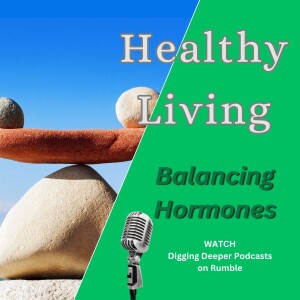
Tuesday Mar 05, 2024
Balancing Hormones
Tuesday Mar 05, 2024
Tuesday Mar 05, 2024
What Is a Hormonal Imbalance?
Hormones are chemicals in your body that are produced by the endocrine glands. Hormones move through your bloodstream to reach the organs and tissues in your body, and regulate functions like:
Appetite and metabolism
Sleep cycles
Heart rate
Sexual and reproductive functions
Overall growth and development
Mood and stress levels
Body temperature
A hormonal imbalance occurs when your body produces too much or too little of the important hormones in your bloodstream. Although an occasional irregularity is not harmful, a major imbalance can have severe consequences on your health.
For women in their 40s or 50s, that’s likely a sign their body is transitioning to menopause.
It’s common for those entering this natural stage of life to gain weight and belly fat (sometimes called “menopause belly”) and experience other bothersome symptoms — sleep-interrupting night sweats, hot flashes, vaginal dryness that causes pain during sex, urinary tract infections, irregular periods, depression, thinning hair, mood swings, weight gain and more.
LISTEN IN to learn more!
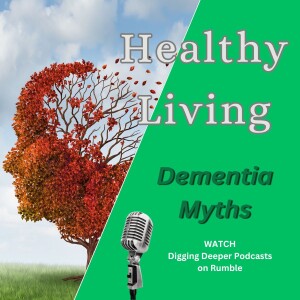
Saturday Feb 17, 2024
Dementia Myths
Saturday Feb 17, 2024
Saturday Feb 17, 2024
How much do you know about Dementia or Alzheimers Disease? Chances are you know more than a few folks that have been affected by it! The numbers of new diagnoses are skyrocketing and there’s a reason for that!
Increasing age is strongly associated with the development of dementia, particularly from dementia, Alzheimer’s disease, and other neurodegenerative causes. Dementia is characterized by significant cognitive decline to the point where independence in everyday activities becomes affected.
Early symptoms of Alzheimer’s:
Loss of smell
Vision issues
Trouble sleeping
Mood swings / Agitation
Difficulty remembering recent events
Difficulty finding words
Problems with spatial location
What we know about Alzheimer’s:
The brain shrinks, starting with the hippocampus
People are getting it at a younger age (as early as their 20s)
There is a correlation between hyperinsulinemia and Alzheimer’s
Treating amyloid plaque hasn’t produced results
Exercise can help reduce the onset of dementia
We’ve often been told that exercise is good for our health, specifically for the body. But is exercise specifically good for your brain? Ultimately, exercise will increase the amount of oxygen in your blood, which is beneficial to every cell in your body.
Physical inactivity ranks as the fourth major risk factor for death globally and has been recognized as a modifiable risk factor for cardiovascular disease, type 2 diabetes, and obesity. Successfully promoting increased physical activity, by engaging in regular aerobic exercise, has the potential to reduce age-associated disease.
Some medication can increase loss of memory
According to Dr. Joel Wallach, “Alzheimer’s” is a physician CAUSED disease!!!
It didn’t even occur in people over 40 years ago, and now it’s the #4 killer of people in the USA over age 65!!
What is Alzheimer’s disease? Well, it’s the disappearing of your brain’s insulation, the Myelin!! What is Myelin made out off? It’s made from CHOLESTEROL!!!
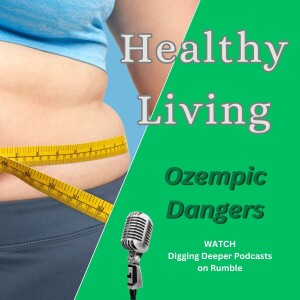
Tuesday Feb 13, 2024
Dangers of Ozempic
Tuesday Feb 13, 2024
Tuesday Feb 13, 2024
"If a fish tank is dirty, you clean the tank. You don’t drug the fish."
‘Absolute Disaster’: Pharma Whistleblower Slams Popular Weight-Loss Drug
Calley Means, founder of health tech firm TrueMed, during the Feb. 2 episode of “The Tucker Carlson Encounter” cited numerous reported side effects — including gastrointestinal issues and suicidal thoughts — of the popular weight-loss drug.
Means, co-author of the book, “Good Energy: The Surprising Link Between Metabolism and Limitless Health,” also argued drugs like Ozempic fail to address the current metabolic health crisis in the U.S., which is rooted in poor nutrition and lifestyle choices.
And yet the messaging that is coming out of the media is that it is a disease that can be solved with drugs. Even Netflix is getting in the on the game. Meat bad – sugar good!?
It’s all about the numbers – 80% of the polulation are prediabetic
According to Means, surging obesity rates have created perverse financial motivations that prioritize lifelong pharmaceutical use over preventative care.
There are significant health concerns. It’s not even approved in Europe, where it is manufactured.
Means said that even in the U.S., where the drug is approved to treat obesity, up to 30% of patients prescribed Ozempic stop using it within three months, attributing this in part to harsh gastrointestinal side effects.
Nausea
Diarrhea
Stomach (abdominal) pain
Vomiting
Constipation
Suicidal thoughts
Ozempic “paralyzes your stomach,” Means said. “And there are studies now saying that [the inability] … to digest food actually stays after you go off the drug. You’re consistently seeing patients who go off the drugs gain the weight back.”
The health care industry is corrupt
While Novo Nordisk downplays legitimate medical concerns in pursuit of sales growth, the potential costs to society are extreme according to health trends Means cited.
With 80% of American adults now overweight amid declining metabolic health markers, analysts forecast more than $1 trillion in annual Ozempic revenues if prescription rates increase in line with current obesity trends.
Weight Watchers has partnered with Ozempic
One of the oldest and most trusted weight loss programs, Weight Watchers, has added Ozempic prescriptions to their list of services.
“Our institutions, particularly the healthcare industry, have completely let us down. Why aren’t doctors giving their patients prescriptions for food interventions if they have pre-diabetes … or allowing them to use their medically tax-advantaged dollars to [pay for] exercise [programs]? If you actually follow the science,” these would be the correct medical interventions, rather than drugs like Ozempic. We’re so gaslighted by this. It’s just pill, pill, pill.”
“Our biggest industry, the healthcare industry, is profiting from us being sick. It’s just that simple. We need to unwind that or we’re going to destroy our human capital and destroy our [national] budget.”
CALLEY MEANS
How can we stop it?
Stop letting Big Pharma buy everyone off. Pharmaceutical companies are paying dividends, grants, consulting fees, etc to the Universities, Health Care providers, individual Dr’s and Mainstream Media all to control the narrative.
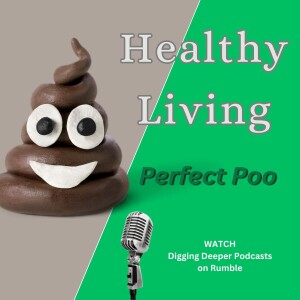
Sunday Jan 28, 2024
Perfect Poo
Sunday Jan 28, 2024
Sunday Jan 28, 2024
Perfect Poo
By Andi Hale
Everybody poops, but nobody really talks about it. But while putting a lid on all potty talk may keep conversations civilized, it may mean we’re missing out on valuable clues to our health.
Your poop can tell you if you’re eating enough fiber and drinking enough water, or if your digestive system is processing food too slowly or too quickly. Also, lasting changes in your bowel habits or the appearance of your poop can be a sign of a medical condition that requires treatment.
Your poo is the end result of your digestion, but your health begins in your gut. It seems like maintaining a healthy gut is the new rage, so how do you know if your gut is healthy and how do you keep it that way?
What is a healthy gut?
Determining whether you have a healthy gut involves assessing various factors related to digestion, bowel habits, overall well-being, and the diversity and balance of your gut microbiome. While individual experiences may vary, here are several indicators that suggest you have a healthy gut:
Regular Bowel Movements
Absence of Digestive Discomfort
Diverse Diet Tolerance
Balanced Mood and Energy Levels
Strong Immune Function
Normal Weight Maintenance
Well-Being of Skin and Hair
Optimal Sleep Patterns
It’s important to note that individual experiences of gut health can vary, and occasional fluctuations in digestive function may be normal. However, persistent or severe digestive symptoms, changes in bowel habits, or other concerning signs should be discussed with a healthcare professional for proper evaluation and management.
How does poop demonstrate a healthy gut?
Poop, while often a subject of humor or discomfort, holds significant clues about our digestive health, particularly the state of our gut microbiome. The gut microbiome refers to the diverse community of microorganisms that reside in our digestive tract, including bacteria, viruses, fungi, and other microbes. These microscopic inhabitants play a crucial role in various aspects of our health, including digestion, immune function, and even mental well-being.
Here’s how poop can serve as an indicator of a healthy gut biome:
Consistency: The texture and consistency of stool can provide insights into the efficiency of digestion and absorption in the gut. Ideally, stool should be well-formed and easy to pass, indicating that the digestive system is functioning optimally. Loose stools or diarrhea may suggest an imbalance in the gut microbiome or issues with food tolerance.
Color: The color of stool can vary depending on factors like diet, hydration, and the presence of certain substances. Generally, a healthy poop color ranges from light to dark brown, reflecting the breakdown of bile pigments in the digestive process. Unusual colors like red (indicating blood), black (suggesting bleeding in the upper digestive tract), or pale (possible bile duct obstruction) may warrant further investigation.
Odor: While nobody enjoys discussing poop odors, they can provide valuable information about gut health. Normal stool typically has a mild odor due to the fermentation of undigested food by gut bacteria. Strong, foul-smelling stool could indicate an imbalance in the gut microbiome or the presence of certain infections or digestive disorders.
Frequency: Regularity in bowel movements is often considered a sign of good digestive health. While individual bowel habits can vary, most people pass stool anywhere from three times per day to three times per week. Consistent changes in bowel habits, such as increased frequency or constipation, may indicate underlying issues with the gut microbiome or digestive function.
Composition: Poop is composed of various elements, including water, undigested food particles, bacteria, and waste products. Analyzing the composition of stool can provide insights into the balance of beneficial and harmful bacteria in the gut microbiome.
pH Level: The pH level of stool can also offer clues about gut health. A slightly acidic pH (around 6.7) is considered normal and helps inhibit the growth of harmful bacteria in the gut. Significant deviations from this range may suggest imbalances in the gut microbiome or digestive disorders.

Saturday Jan 20, 2024
Prediabetes Epidemic
Saturday Jan 20, 2024
Saturday Jan 20, 2024
Over 80% of people with prediabetes don’t know they have it because they don’t get tested regularly.
Diabetes is a disease in which blood glucose, or sugar, levels are too high. More than nine in 10 cases are type 2 or “adult-onset” diabetes, the kind linked to excess body weight and physical inactivity.
Insulin resistance is when cells in your muscles, fat, and liver can’t use the insulin it makes. As a result, the pancreas produces more insulin to help glucose get into your cells. The CDC relates insulin to a key that lets sugar into cells for use as energy.
One in three adults in the U.S. has prediabetes – that’s about 96 million Americans, according to the Centers for Disease Control and Prevention (CDC). People with prediabetes have high blood sugar levels that can lead to developing type 2 diabetes.
Over 80% of people with prediabetes don’t know they have it because they don’t get tested regularly.
Prediabetes can leave you at risk for type 2 diabetes, heart disease, and stroke. Some good news is that an active lifestyle and weight loss can help prevent or delay serious health problems.
The American Diabetes Association recommends testing for prediabetes and diabetes in adults without symptoms who are overweight and have one or more risk factors. They include:
lack of physical inactivity
parent or sibling with diabetes
family background is African American, Asian American, Hispanic/Latino, Alaska Native, American Indian or Pacific Islander
gestational diabetes or gave birth to a baby who weighed more than 9 pounds
high blood pressure
low high-density lipoprotein (HDL) or “good” cholesterol
high triglyceride levels
polycystic ovary syndrome
impaired fasting glucose or glucose tolerance in previous testing
severe obesity and other conditions associated with insulin resistance
cardiovascular disease
Can I change it?
The good news about a prediabetes diagnosis is that it can be used as warning sign. Prediabetes can allow you to take control of and change your health and habits before it’s too late. Modest lifestyle changes can delay or prevent the onset of type 2 diabetes in prediabetics. These changes can even restore normal blood-glucose levels.
A 5-7% weight loss along with 150 minutes a week of moderate physical activity can reduce the onset of type 2 diabetes in prediabetics by nearly 60%.
If this sounds like a lot, here’s some perspective: For someone who weighs 200 pounds, a 5-7% weight loss means 10-14 pounds. And 150 minutes of exercise can translate into a brisk 30-minute walk, five days a week.
What foods should I eat?
“People with prediabetes do not have to eliminate entire food groups,” she explains. “All foods can fit in the meal plan, and patients should steer clear of fad diets and other strategies that promise quick fixes, since their claims are not supported. We encourage making gradual behavior changes. Small changes can lead to big results.” – Tara Seymour, clinical dietitian and diabetes educator at Johns Hopkins
The ADA’s version of the recommendations suggests these proportions for meals:
50% of the plate filled with nonstarchy vegetables, such as leafy greens
25% with healthy carbohydrates, such as whole grains like brown rice, farro or quinoa
25% with lean protein, such as chicken, turkey, fish or tofu, not fried
Water or another zero-calorie beverage is preferred.
Seymour also recommends:
Avoiding excessive intake of added sugars by limiting sugary beverages, cakes, cookies, candy and snacks
Limiting portion sizes of refined carbohydrate foods such as white bread, white rice and white pasta
Incorporating fiber to reach a goal of 25 to 30 grams per day by eating a variety of fruits, vegetables and whole grains
Limiting saturated and trans fats by choosing lean protein and low-fat dairy
Blood sugar levels are important indications of prediabetes, and it’s no secret that most Americans eat more sugar than they should. Sugar can hide in less obvious places, including processed foods such as breakfast cereals, frozen meals, snacks, sauces and dressings.
Though some sugar is necessary for your body to function, too much can worsen prediabetes. Seymour explains: “Carbohydrates are an important source of energy since glucose [blood sugar] is the preferred molecule to fuel the brain. However, excessive intake of refined carbohydrates from added sugar can cause adverse health effects.
Plant Enzymes Can Turn Sugar to Fiber
The average American consumes about 17 teaspoons of added sugar a day, or 270 calories, well more than the 9 teaspoons for men and 6 teaspoons for women recommended by the American Heart Association.
Harvard University’s Wyss Institute, in a study funded by the Kraft-Heinz Co., found sugar exposed to encapsulated plant enzymes in the gut can be turned into fiber. The finding, if verified, could have a significant impact on an estimated 34.2 million U.S. diabetics.
The enzyme activates only when it encounters a rise in pH “such as that which occurs in the transition from the human stomach to intestine.”
“This could help diabetics, but it would not make eating sugar healthy,” said Amy Shapiro, founder of Real Nutrition NYC. “Many foods that contain sugar also contain artificial colors, flavors, and processed ingredients which makes them unhealthy and can promote other illnesses like high blood pressure, weight gain, and fatigue.”
These enzymes are available under the name 'Transform' at https://www.greengoldnaturalhealing.com
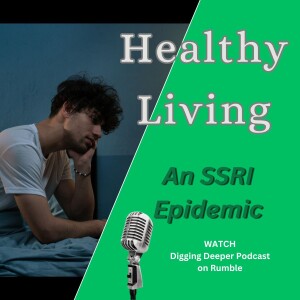
Sunday Jan 14, 2024
An SSRI Epidemic
Sunday Jan 14, 2024
Sunday Jan 14, 2024
What are SSRI’s
Antidepressants work by changing the balance of certain neurotransmitters in your brain, but which ones they affect and how they affect them varies from one antidepressant to another — and there are many different classes of antidepressants.
Selective serotonin reuptake inhibitors, or SSRIs, are indeed the most common type of antidepressant prescribed in the United States, and they have been ranked number one for several decades.
Serotonin regulates certain aspects of your mood, including feelings of happiness, and SSRIs increase the amount of serotonin in your brain by blocking your brain cells from reabsorbing (or reuptaking) existing serotonin. Most of the time, SSRIs produce a noticeable improvement in people affected by depression within about two to four weeks.
Currently, several different SSRI antidepressants are used to treat depression, anxiety disorders and other conditions. They include:
Citalopram (Celexa®)
Escitalopram (Lexapro®)
Fluoxetine (Prozac®)
Fluvoxamine (Luvox®)
Paroxetine (Paxil®)
Sertraline (Zoloft®)
Vilazodone (Viibryd®)
Vortioxetine (Trintellix®)
SSRI Side Effects
Gastrointestinal Issues
Insomnia
Weight Changes
Dry Mouth
Dizziness, Tremors and Headaches
Nervousness, Restlessness and Agitation
Sexual Side Effects
Sexual dysfunction is a common side effect among SSRIs. Women may experience sexual side effects such as difficulty experiencing an orgasm and decreased sex drive. These side effects can affect both men and women. For men, adverse effects can be having difficulty experiencing orgasm, erectile dysfunction and decreased sex drive. Between 40 and 65 percent of people who take an SSRI experience some form of sexual dysfunction, according to a review of studies published in the journal The Mental Health Clinician.
SSRI’s and Gender Dysphoria
Anti depressants (SSRI’s) can potentially have nasty side effects long after stopping them. One of these is PSSD Post SSRI sexual dysfunction This can cause Total loss of libido Genital numbness Emotional blunting For years or decades You think people are told this prior?
For many users of antidepressants, the sexual side-effects are the reason they eventually discontinue the drug, with or without medical supervision.
When patients bring our concerns about sexual functioning while on antidepressants to our health care providers, they are almost universally told that their sexuality will return to normal after tapering off the drug. Unfortunately, recent data has emerged showing that this is not always true. Some people continue to experience sexual dysfunction for weeks, months, or years after stopping the medication. Sometimes, these symptoms emerge only after tapering off the medication.
For an unfortunate minority, a total elimination of sexual drive persists indefinitely. They may have severe or total loss of erotic sensation in our genitals, sometimes to the point of tactile numbness.
The effects of losing my sexuality have been absolutely devastating to my relationships and mental health. I have been robbed of an essential aspect of my humanity.
EMILY, AGE 24, PSSD 2 YEARS
A growing movement of people across the globe are trying to raise awareness about a seldom discussed topic: youth sexual dysfunction and its ties to these popular medications. Sexual issues such as low libido and erectile dysfunction are not unusual for those over the age of 40, but many young people may not know that they could possibly run into these physical health issues if they are prescribed meds to treat mental health issues.
The brain chemical mechanism that many of these drugs use to prevent low emotions may also have the side effect of killing the joy of not just sexual relations, but also of human experience joys such as music and artwork.
In addition to the loss of libido and sexual sensation (numbness of genitalia and other erogenous zones), my general sensitivity to the pleasure of touch has declined. A caress on bare skin registers as little more than pressure…. There is a feeling of numbness, as if there is some kind of barrier between my skin and the source of contact.
ELLEN, AGE 48, PSSD FOR 14 YEARS
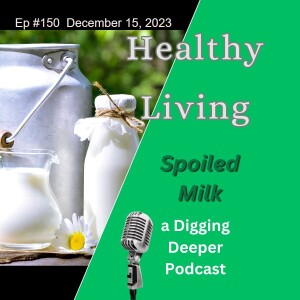
Saturday Jan 13, 2024
Spoiled Milk
Saturday Jan 13, 2024
Saturday Jan 13, 2024
Milk does a body good, right?
Humans have been drinking animal milk for thousands of years and never had any problems. And yet these days, the natural milk right from the cow (or goat, etc.) is dangerous.
The reason milk has been deemed deadly is because of commercialization. In the big cities in the 1800’s, dairy cows would be fed the chaff of the grain used in alcohol production next door. This feed was lacking in any nutrients, so the cows became sickly and their rumen (stomachs) could not kill all the bad bacteria, which then ended up in their milk. The milking conditions were also horrible. Cleanliness was not a priority which caused diseases like e-coli to contaminate the milk. This was when milk got a bad rap as spreading diseases like tuberculosis and e-coli.
In 1856, Pasteur discovered that fermentation was caused by microbes, and that the results of that process – e.g. whether grape juice became wine or vinegar – depended on the microbe present. Later, he saved France’s wine industry from being taken over by the ‘bad’ vinegar microbe, and realized that heating up the wine to a specific temperature for a specific time would kill the microbe and preserve the wine. He patented the procedure and called it ‘pasteurization’.
Pasteurization was then used by the dairy industry in the late 1800s and around the turn of the century because tuberculosis was rampant and often spread through contaminated milk. Robert Koch discovered that tuberculosis was caused by a bacterium and infectious, and not – as widely believed – inheritable, in 1882.
The first law requiring the pasteurization of milk was passed in Chicago in 1908, and has since been the common practice in the US. The process protects the public from food-borne illnesses including salmonellosis, yersiniosis, E. coli-associated hemolytic-uremic syndrome (HUS), brucellosis, listeriosis, typhoid fever, Campylobacter enteritis, Q fever, and cryptosporidosis. It also extends the shelf life of the milk.
Sounds like a no brainer, right? So what’s wrong with pastuerized milk?
Pasteurization is viewed by some as a blessing and by others as a curse. It is possible to find a great amount of detail on the Internet that supports each point of view. Pasteurization not only kills unwanted bacteria and other microbes in milk but also significantly alters the nutritional value and digestibility of the pasteurized milk itself.
Drink pasteurized milk at your own risk!
Not everyone responds to pasteurized milk in the same way. While it is harmful at some level to anyone who consumes it, its negative effects vary widely.
Here are 10 reasons to think twice before consuming pasteurized milk products.Pasteurization is a process of heating raw milk to kill harmful bacteria, but only milk from a diseased animal or milk that has been handled in an unsanitary manner, will contain harmful bacteria.During the pasteurization process milk is heated to a temperature that is harmful to the enzymes and other proteins that naturally occur in unheated raw milk. Pasteurized milk therefore contains denatured proteins.Denatured proteins cannot be completely broken down in the human body. This many times results in lactose intolerance.
Partial breakdown of these denatured proteins results in undigested protein molecules which contribute to cellular inflammation and mucous formation. This increases waste products.An increase in waste products in the bodily fluids contributes to overall toxicity and can overtax the lymphatic system affecting overall immune efficiency.
Pasteurized milk in the form of ice cream, cheese, yogurt, etc. will have the same negative effect as drinking the milk in liquid form.
The enzymes needed to break down lactose, the sugar found in milk, stops being produced in humans between the ages of two and five years old. To continue to drink pasturized milk past the age of five spells trouble to a person’s overall health.
Pasteurized milk contains an altered form of calcium that is very poorly absorbed by the human body. People who insist that milk should be consumed for its high calcium content are terribly misinformed.The calcium found in pasteurized milk is of an extremely poor quality. It is the kind of calcium that readily forms kidney stones, gallstones and phleboliths (calcification in arteries and veins).So what is the alternative?
Raw milk is fresh from the cow, but how do you ensure that it’s not contaminated? We like to say “Shake the hand that feeds you.” You not only help out the small business owner, but you develop a relationship with them and know first hand how they run their operation.
In many ways, raw milk is similar to breastmilk: both are completely natural, fresh, and unprocessed milks. They both contain a wide variety of essential nutrients, fats, proteins, anti-inflammatory and digestive enzymes, bioavailable vitamins, and minerals, all in a natural form which is most easily utilized by the body. In addition, raw milk facilitates production of lactase enzyme in the intestinal tract, allowing many people who are lactose intolerant to digest raw milk with no problems.
Main FindingsLarge studies have found that raw milk consumption is associated with lower rates of:
asthmaallergieseczemaear infectionsfeversrespiratory infections
Allergy protection ceases when raw milk is heated to 149 °F, which is the same temperature at which the whey proteins are denatured. It is likely that the raw whey proteins are responsible for raw milk’s beneficial effects on allergies, asthma, and inflammation.
Childhood consumption of raw milk correlates with higher pulmonary (lung) function and lower incidence of allergic diseases in adults.
Raw milk’s beneficial effects on asthma are partially mediated by regulatory T cells.

Saturday Jan 06, 2024
Not So Sweet
Saturday Jan 06, 2024
Saturday Jan 06, 2024
Artificial sweeteners can sound like a dream come true. All that sweet taste but no actual sugar and no (or very few) calories sounds great!
In our Glucose Overload article we reported that most American consumers are so addicted to sugar that they will deny their addictions in the same way that a crack or heroin addict might. Sugar is, essentially, a legalized recreational drug that’s socially acceptable to consume. And yet, just like other drugs, it destroys a person’s health over time, rotting out their teeth, disrupting normal brain function, promoting heart disease and directly causing diabetes and obesity.
So we know sugar is not good for you, but we love sweet, so what do we do about that? Well we know what the food industry did. They created fake sugar out of chemicals, not once but several times.
Artificial sweeteners can sound like a dream come true. All that sweet taste but no actual sugar and no (or very few) calories? Yes, please! But artificial sweeteners come with concerns of their own.
Just as with sugar, artificial sweeteners may cause you to crave more sweet and sugary foods.
Artificial sweeteners often include sugar alcohols. One sugar alcohol commonly used in artificial sweeteners, erythritol, has been linked to increased risk for heart attack and stroke.
Some researchers suggest artificial sweeteners may be linked to a range of other health conditions, including having obesity, hypertension, Type 2 diabetes, heart disease and more. Those outcomes haven’t been validated across the board, though. Research is still ongoing.
So let’s name these sugar substitutes and dig into their benefits, or lack thereof.
Increases in obesity, diabetes, and metabolic syndrome has led to a shift toward low-calorie artificial sweeteners. The United States Food and Drug Administration (US-FDA) authority has approved six nonnutritive sweeteners [NNS] (saccharine, aspartame, sucralose, neotame, acesulfame-K, and stevia) for use in humans and has classified them under generally recognized as safe (GRAS) category.
Acesulfame potassium (Sweet One, Sunett) is 200 times sweeter than sugar.
Aspartame (NutraSweet, Equal) is 200 times sweeter than sugar.
Neotame (Newtame) is 7,000 to 13,000 times sweeter than sugar.
Saccharin (Sweet’N Low) is up to 700 times sweeter than sugar.
Sucralose (Splenda) is 600 times sweeter than sugar.
Luo han guo (Monk Fruit in the Raw) is 200 times sweeter than sugar.
Purified stevia leaf extracts (Truvia, PureVia, others) is 400 times sweeter than sugar..
I got some bad news …
Extensive marketing by the manufacturers has led to overuse, and sometimes even abuse of NNS, by the population. They are believed to suppress hunger and appetite, leading to beneficial effect on body weight and cardiometabolic profile and are consumed by both lean and obese alike. A huge number of diabetic patients too opt for these “sugar-free” sweeteners as a substitute for sugar in their diet.
Some research on long-term, daily use of artificial sweeteners suggests a link to a higher risk of stroke, heart disease and death overall.
Other research is looking at long-term use of sugar substitutes and the gut. Many focus on how the gut and brain communicate. Researchers are checking to see if sugar substitutes affect cravings for sweets, the way people feel hunger and how the body manages blood sugar.
In the early 1970s, saccharin was linked with the development of bladder cancer in laboratory rats. Since then, the FDA has conducted “extensive research” on saccharin. In 2000, the U.S. government removed the requirement for a warning label on foods and drinks made with saccharin.
Sugar alcohols, stevia and luo han guo can cause bloating, gas and diarrhea. The amount of sugar alcohol that causes these symptoms varies from person to person.
An observational study done in France studied 100,000 adults and found that those consuming aspartame and other artificial sweeteners, especially in larger amounts, had higher risk of cancer.
The World Health Organization (WHO) listed aspartame as “possibly carcinogenic to humans” on July 14, 2023. Aspartame is found in the majority of diet sodas like Diet Coke and Diet Pepsi, some Snapple drinks, gum and even some yogurts and candies.
In the Multiethnic Study of Atherosclerosis, daily consumption of diet drinks was associated with a 36% greater risk for metabolic syndrome and a 67% increased risk for type 2 diabetes. Aren’t these diseases that artificial sweeteners may help prevent in the first place?
Overstimulation of sugar receptors from frequent use of these hyper-intense sweeteners may limit tolerance for more complex tastes. That means people who routinely use artificial sweeteners may start to find less intensely sweet foods, such as fruit, less appealing and unsweet foods, such as vegetables, downright unpalatable.
In other words, use of artificial sweeteners can make you shun healthy, filling, and highly nutritious foods while consuming more artificially flavored foods with less nutritional value.
Start reading labels – if you can’t pronounce it then it probably shouldn’t be in your food. Eat real, whole foods, grass-fed meats, organic produce and minimal sweets and kick sweeteners like aspartame to the curb.








